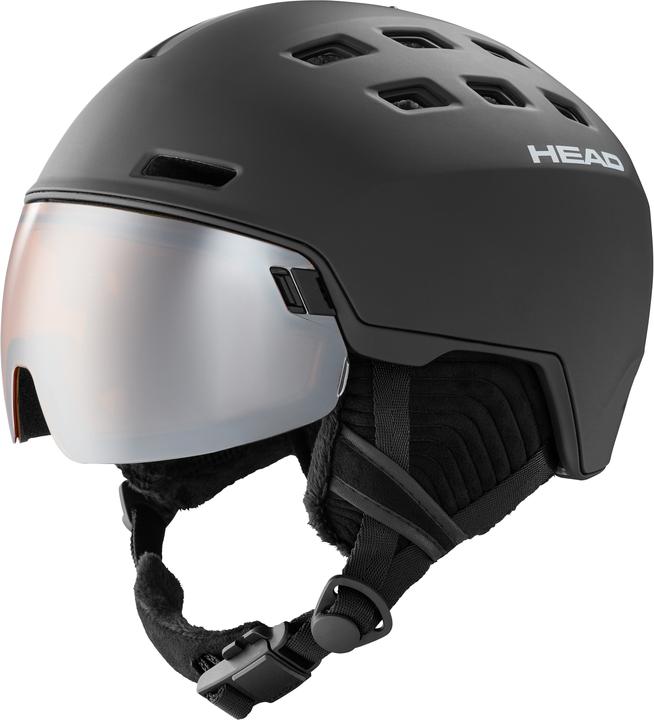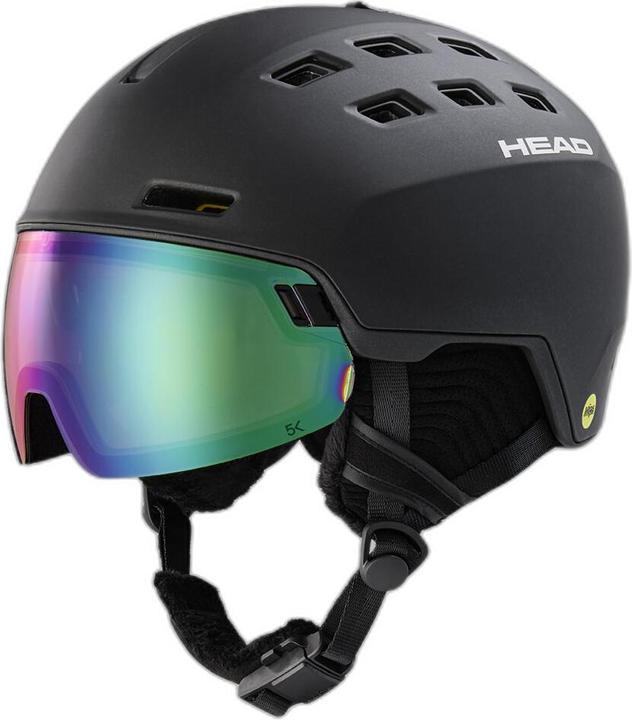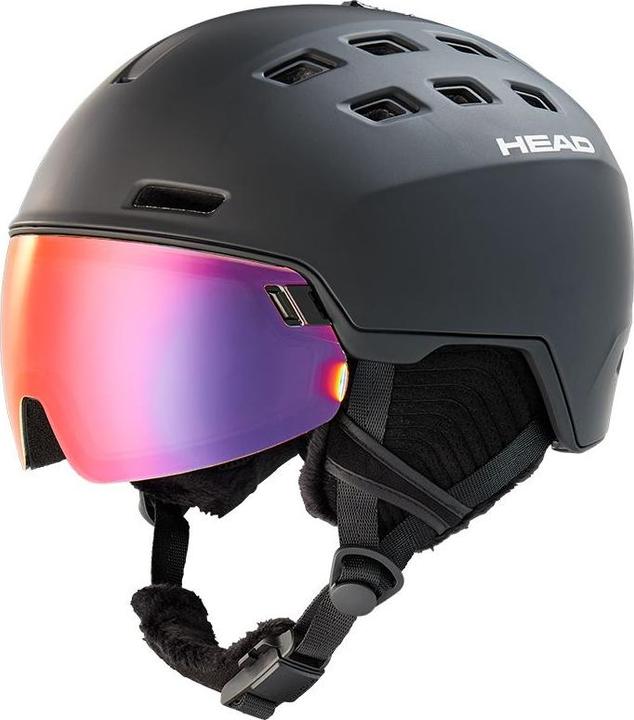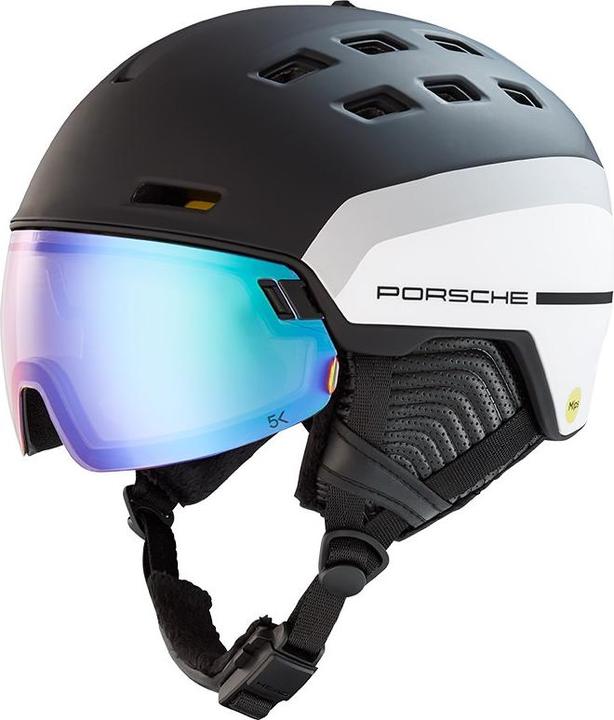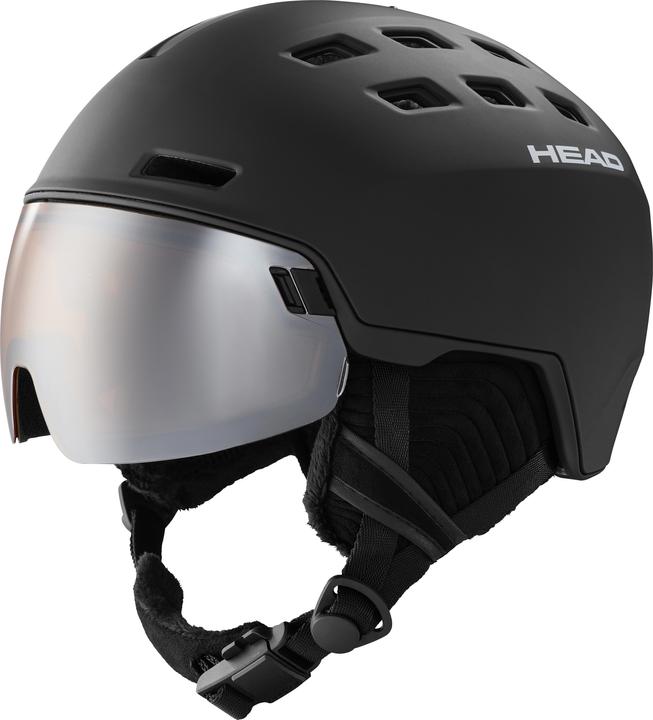
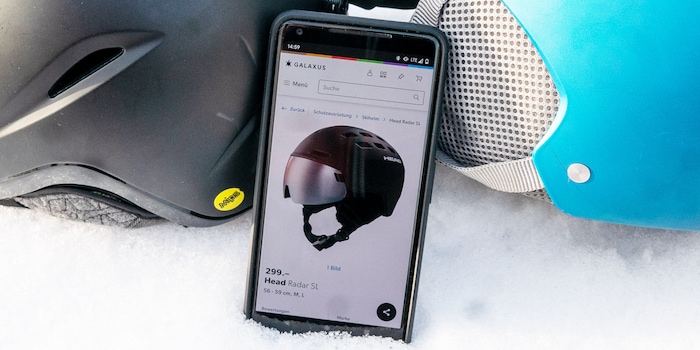
5K, IAS, In-Mold: Ski helmet details targeted
Once you have found an interesting helmet, it often comes in different versions. And sometimes a glance at the description raises more questions than it answers. A little tour through the jungle of terms.
The search for a new ski helmet can be a headache. No sooner have you got your bearings and shortlisted a model than others pop up that look the same at first glance but are in a different league in terms of price. They have additional designations such as SL or 5K and you have to check again to make sure you haven't landed in the car or TV range. Models with integrated visor offer an extra dose of confusion potential: this is where terms from the helmet and ski goggle worlds come together. I can well understand community member Rafael.martinezm8 who, when looking at the Radar models from Head, only thought "Huh?!?", asked nicely and has since received his answer.

Part of the answer is that it is complicated because each manufacturer uses its own terms and abbreviations. In the 111-page "Hardgoods" catalogue from Head, you'll find the standard "Radar" model (its fluffy padded sister model is called "Rachel"). It has a double lens visor with quick release system. Included is a category S2 lens with 20 per cent light transmission, which does a good job in bright to cloudy "normal" weather. For the more expensive "SL" model, I got the abbreviation quiz right: it comes with a "spare lens". So you get a second lens and pay more for it.
While the standard category S2 lens offers 23 per cent light transmission, the interchangeable category S1 lens comes in at 75 per cent light transmission for poorer visibility and snowfall. Whether this is worth it? A look at the cost of individually available replacement lenses argues against it. And in terms of price, the "SL" model is not far from the Head Radar 5K Photo MIPS.
The name alone is great cinema and the abbreviations break down as follows from the back:
- MIPS stands for Multi-Directional Impact Protection System. It is now widely used and accordingly well known. In cycling and winter sports helmets, it ensures that the rotational forces are reduced in the event of an impact by means of a movable inner shell. You can filter for this when searching on Galaxus.
- Photo stands for a photochromatic (self-tinting) visor. The one in our example adapts from S1 to S3 (46 to 16% light transmission) to the respective conditions, without you having to reach for interchangeable lenses.
- Photo stands for a photochromic (self-tinting) visor.
- 5K is Head's name for a special filtering lens designed to optimise colour and contrast. Other manufacturers call similar approaches, for example Vivid (Giro) or Prizm (Oakley).
All clear? Then straight on to the next variation:
- "Pola" on the Radar 5K Pola stands for the polarisation filter in the glass, which is intended to reduce light reflections.
Seeing through the visor? And now for the helmet
I hold fast: a visor can be useful on the slopes, but makes it difficult to see through it when choosing a helmet. Just like other terms from the helmet scene that you need to know in order to be able to filter meaningfully by them.
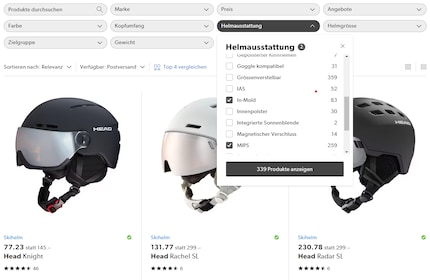
- Fidlock is a brand name and, in ski helmets, stands for a magnetic buckle on the chin strap, which is a bit fiddly at first (because it's unfamiliar) and practical later on. See also filter option: magnetic buckle.
- IAS is a fitting system from Uvex, which allows the width of the helmet to be adjusted. IAS 3D can also be adjusted to the head height. At Head, this kind of all-round adjustment is called the Sphere Fit System. Sphere Fit, of course, has nothing to do with Spherical MIPS. This is a further development of the aforementioned impact protection.
- In-Mold stands for the construction method in which the cushioning EPS is foamed into and firmly bonded to the hard outer shell. This results in lightweight helmets that are harder to ventilate than hardshell or hybrid constructions.
- EPS stands for Expanded Polystyrene and is the inner foam that acts to cushion on impact. Mentioned mainly when there is not much else to it, and would not be my first choice as a filter option.
With the questions: "MIPS - yes or no? Visor - yes or no? Adjustable ventilation - yes or no? Size adjustable - yes or no?" would clarify the crucial points for me. Except for one: The Head Radar 5K Photo MIPS is also available as the Head Porsche Radar 5K Photo MIPS. I really can't explain why this model is even more expensive.
Simple writer and dad of two who likes to be on the move, wading through everyday family life. Juggling several balls, I'll occasionally drop one. It could be a ball, or a remark. Or both.
Practical solutions for everyday problems with technology, household hacks and much more.
Show all